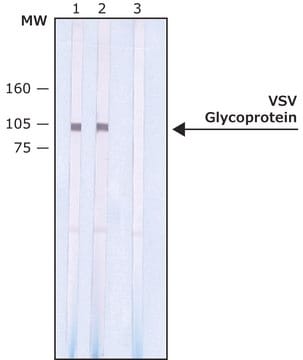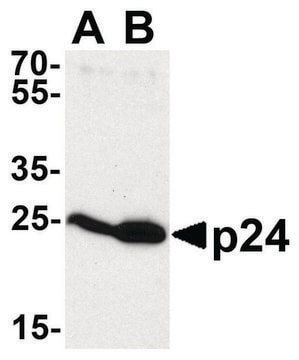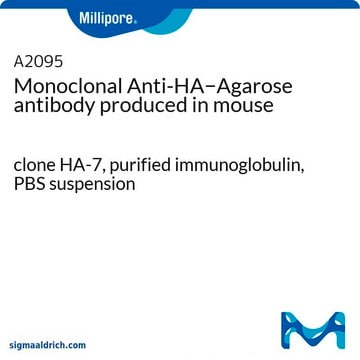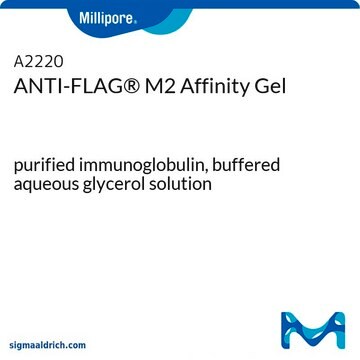V4888
Anti-VSV-G antibody produced in rabbit
affinity isolated antibody, buffered aqueous solution
Sinonimo/i:
Anti-Vesicular Stomatitis Virus glycoprotein
Scegli un formato
500,00 €
Scegli un formato
About This Item
500,00 €
Prodotti consigliati
Origine biologica
rabbit
Coniugato
unconjugated
Forma dell’anticorpo
affinity isolated antibody
Tipo di anticorpo
primary antibodies
Clone
polyclonal
Stato
buffered aqueous solution
Reattività contro le specie
mammals
Concentrazione
~1.0 mg/mL
tecniche
immunoprecipitation (IP): 0.5 μg using VSV-G tagged fusion proteins from transfected mammalian cell lysates (tagged fusion proteins from transfected mammalian cell lysates)
indirect immunofluorescence: 1.0 μg/mL using VSV-G tagged fusion proteins in methanol/acetone fixed transiently transfected cells
western blot: 0.1-0.2 μg/mL using VSV-G tagged fusion proteins from transfected mammalian cell lysates
Condizioni di spedizione
dry ice
Temperatura di conservazione
−20°C
Descrizione generale
Immunogeno
Applicazioni
immunocytochemistry.
Chromatin immunoprecipitation (1 paper)
Western Blotting (1 paper)
Western blotting following immunoprecipitation (1 paper)
Azioni biochim/fisiol
Stato fisico
Non trovi il prodotto giusto?
Prova il nostro Motore di ricerca dei prodotti.
Codice della classe di stoccaggio
10 - Combustible liquids
Classe di pericolosità dell'acqua (WGK)
WGK 3
Punto d’infiammabilità (°F)
Not applicable
Punto d’infiammabilità (°C)
Not applicable
Scegli una delle versioni più recenti:
Certificati d'analisi (COA)
Non trovi la versione di tuo interesse?
Se hai bisogno di una versione specifica, puoi cercare il certificato tramite il numero di lotto.
Possiedi già questo prodotto?
I documenti relativi ai prodotti acquistati recentemente sono disponibili nell’Archivio dei documenti.
Filtri attivi
Il team dei nostri ricercatori vanta grande esperienza in tutte le aree della ricerca quali Life Science, scienza dei materiali, sintesi chimica, cromatografia, discipline analitiche, ecc..
Contatta l'Assistenza Tecnica.








